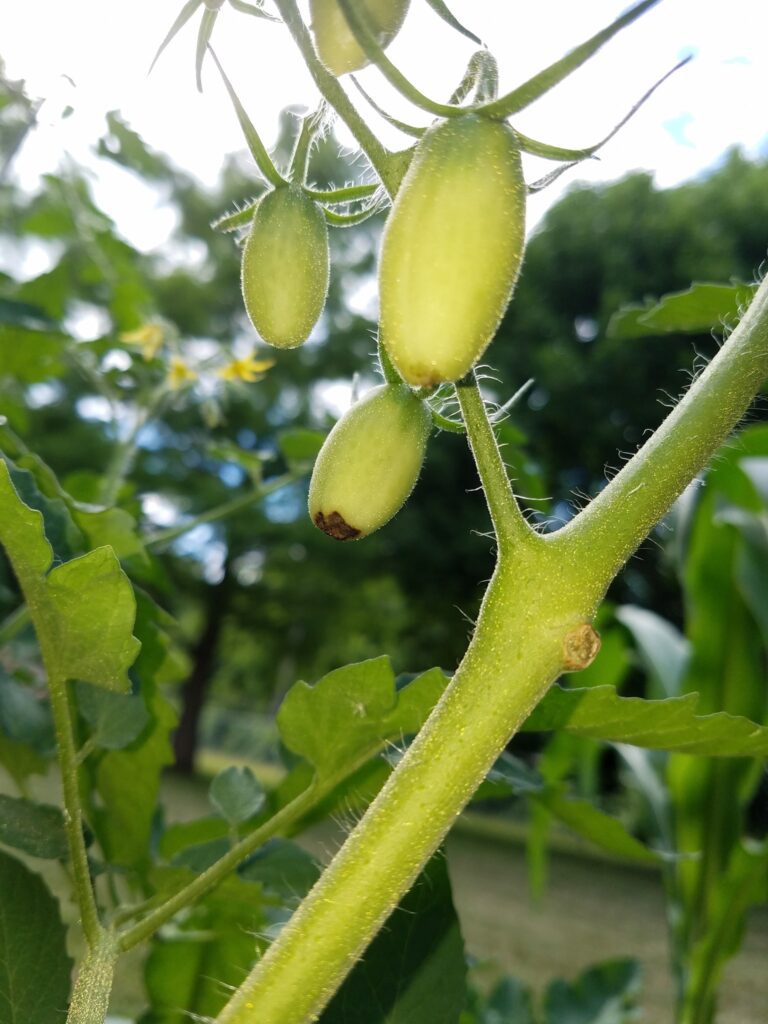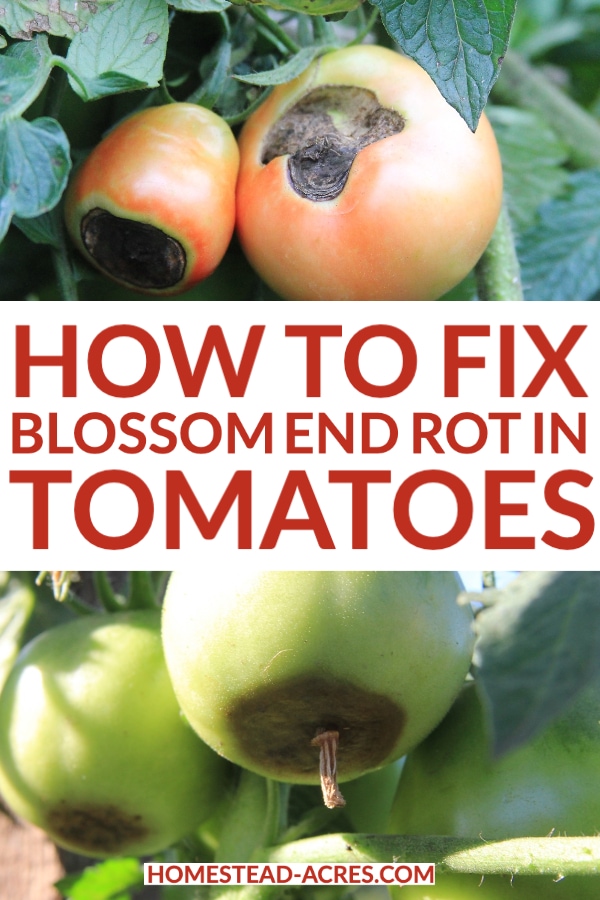To fix blossom end rot, you can prevent it by ensuring consistent watering and providing adequate calcium for your plants. Blossom end rot occurs due to a calcium deficiency in the soil, causing the ends of fruits to rot.
With proper watering techniques and adding calcium supplements, you can effectively address the issue and eliminate blossom end rot from affecting your plants. Blossom end rot is a common problem faced by gardeners and farmers, especially when growing fruiting vegetables such as tomatoes, peppers, and squash.
It can be frustrating to see your hard work ruined by rotted fruits. However, with a few simple steps, you can easily fix blossom end rot and ensure healthy, productive plants. We will explore effective methods to tackle blossom end rot and provide you with practical solutions to prevent this issue from recurring. Taking these steps will help you maximize the yield of your plants and enjoy a bountiful harvest.

Credit: shiftingroots.com
Understanding Blossom End Rot
Blossom End Rot is a common issue faced by many gardeners and plant enthusiasts. This condition affects the fruiting vegetables, such as tomatoes and peppers, causing them to develop dark, sunken patches on the bottom end of the fruit. This unsightly condition can lead to the fruits becoming inedible and can significantly impact plant health.
| Definition | Causes |
|---|---|
| Blossom End Rot is a physiological disorder caused by a calcium deficiency in the plant. |
|
This calcium deficiency disrupts the plant’s ability to transport and utilize necessary nutrients, leading to the development of this rotting condition. It’s crucial to address the underlying causes to prevent further occurrences and protect the overall health of the plant.
Identifying Blossom End Rot
Visual Symptoms: Blossom end rot is a common problem that affects tomatoes and other fruits and vegetables. One of the key ways to identify blossom end rot is by its visual symptoms. Affected fruits show a dark, leathery patch at the blossom end, which gradually enlarges and becomes sunken. This patch can range in color from black to brown and may have a wrinkled appearance. As the fruit continues to grow, the affected area becomes more pronounced, often leading to fruit drop.
Factors Contributing to Development: Several factors can contribute to the development of blossom end rot. Calcium deficiency in the soil is one of the primary causes. When there is insufficient calcium available to the plant, it results in the breakdown of cell walls and the development of blossom end rot. Other factors such as fluctuations in moisture levels, uneven watering, excessive nitrogen fertilization, and high salt levels in the soil can also contribute to this condition.
How to Fix Blossom End Rot: Step by Step Guide
Treating Blossom End Rot
Blossom end rot is a common issue in plants, but it can be fixed with the right treatment. One of the first steps in treating blossom end rot is to conduct a soil analysis. By analyzing the soil, you can determine if any amendments are needed. Adjusting the nutrient balance is crucial in preventing blossom end rot. Ensuring that the plant receives the proper amount of calcium, magnesium, and potassium can help prevent this problem.
Additionally, watering techniques play a significant role in treating blossom end rot. Applying water consistently and evenly can prevent moisture stress and help the plant absorb nutrients effectively. Finally, taking preventive measures is essential to address blossom end rot. Regularly inspecting the plant, providing adequate mulching, and avoiding excessive nitrogen fertilization can prevent this condition from occurring.
Soil Analysis And Amendments
Soil analysis is a crucial step in addressing blossom end rot. Testing the soil’s pH level is essential to determine if it is too acidic or alkaline. To modify pH levels, you can use various amendments. To raise the pH level of acidic soil, incorporate organic materials such as compost or aged manure. These additions increase the soil’s ability to retain moisture and provide essential nutrients.
On the other hand, if the soil is alkaline, you can lower the pH level by using elemental sulfur or peat moss. Adding organic matter to the soil is also beneficial, as it improves its structure and helps retain moisture. Moreover, organic matter provides essential nutrients, promoting healthy plant growth.
Adjusting Nutrient Balance
Blossom end rot is a common problem faced by gardeners and can be frustrating to deal with. One of the key factors in fixing blossom end rot is adjusting the nutrient balance in the soil. Identifying imbalances is the first step to take. This can be done by conducting a soil test to determine the nutrient deficiencies or excesses. Once the imbalances are identified, fertilizer application is necessary.
Choosing a fertilizer with the appropriate nutrients and applying it according to the recommended rates is crucial. Nutrient timing and ratios are also important considerations. Providing the right nutrients at the right time and in the correct proportions can help prevent blossom end rot and promote healthy plant growth. By following these guidelines and making the necessary adjustments to the nutrient balance, you can effectively fix blossom end rot and ensure a successful gardening experience.
Watering Techniques
Watering techniques play a vital role in preventing blossom end rot in plants. To maintain consistent moisture levels, it is important to water your plants evenly and regularly. This helps to prevent fluctuations in soil moisture, which can contribute to the development of blossom end rot. Additionally, ensuring proper drainage is crucial as well. Good drainage helps to remove excess moisture from the root zone, preventing waterlogged conditions that can lead to the disease.
Another effective practice is mulching. Applying a layer of organic mulch around the base of the plants helps to conserve soil moisture, reducing the risk of both underwatering and overwatering. It also helps to regulate soil temperature, which further supports plant health. By implementing these watering techniques, you can minimize the occurrence of blossom end rot and promote the overall well-being of your plants.
Preventive Measures
Plant Selection and Care: Start by selecting healthy plants with good genetic resistance to blossom end rot. Choose varieties that are known to be less susceptible to the disease. Provide proper care by watering regularly to maintain consistent soil moisture. Avoid over-watering or allowing the soil to dry out completely. Mulching around the plants can help conserve moisture and regulate soil temperature.
Managing Environmental Factors: Ensure proper soil pH by conducting a soil test and making necessary adjustments. Maintain adequate calcium levels in the soil by adding lime or gypsum if necessary. Provide sufficient and balanced nutrition by fertilizing with a slow-release fertilizer that contains essential nutrients such as calcium, phosphorus, and potassium.
Disease Prevention: Implement proper sanitation practices, such as removing and disposing of infected plant material. Practice crop rotation to reduce the risk of disease recurrence. Use organic or chemical fungicides as a preventive measure, especially during periods of high disease pressure. Regularly monitor plants for any signs of blossom end rot and take immediate action if symptoms appear.
Frequently Asked Questions Of How To Fix Blossom End Rot
How Can I Prevent Blossom End Rot In My Plants?
Blossom end rot can be prevented by maintaining consistent soil moisture, providing adequate calcium to the plants, and avoiding over-fertilization. Ensure proper watering and use calcium-rich amendments or supplements to promote healthy growth and prevent this condition.
What Are The Symptoms Of Blossom End Rot?
Blossom end rot is characterized by the development of dark, sunken spots at the blossom end of fruits. Initially, these spots are small and water-soaked, but they gradually enlarge and become dark brown or black. This condition typically affects tomatoes, peppers, and other fruiting vegetables.
What Causes Blossom End Rot In Plants?
Blossom end rot is primarily caused by a calcium imbalance in the plant. Fluctuating levels of calcium in the soil can lead to a deficiency in the developing fruits, resulting in the characteristic symptoms. Factors such as uneven watering, rapid plant growth, and nutrient imbalances can contribute to this condition.
Conclusion
By following the tips and techniques mentioned in this blog post, you can effectively fix blossom end rot in your plants. From providing proper soil preparation to maintaining consistent watering and adequate calcium levels, taking these preventative measures will significantly reduce the chances of your plants developing this common issue.
With a little bit of care and attention, you can ensure healthy, productive plants and bountiful harvests.

